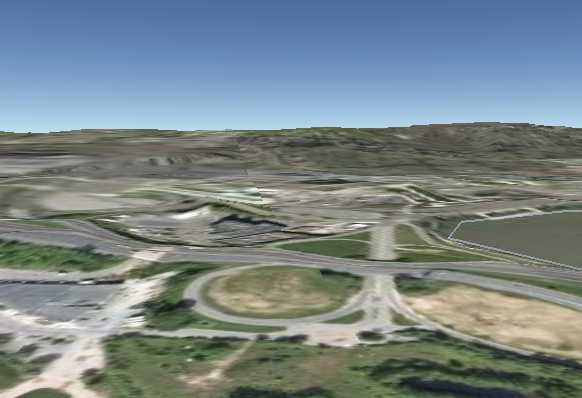A pitcher plant feeds carnivorously on unsuspecting insects. Bugs crawl, fly or fall into the plant. They cannot escape. Soon victims drown and slowly dissolve into a soup absorbed by the plant for nutrition.

The Situation
I read a great article in the Washington Post over the weekend that is still available online: “Drunk Drivers Find Pentagon’s Maze of Roads Leads to Court.” Like the insect and the pitcher plant, drunk drivers become disoriented within the spaghetti of roadway surrounding the Pentagon. They cannot find an exit as they attempt to extricate themselves from this heavily patrolled security zone. Their frantic, erratic late-night behavior attracts quick police attention. Then they find themselves in handcuffs before a Federal judge.
Unlike the hapless buggy casualties of the pitcher plant, these are not innocent victims. They could have caused all kinds of mayhem had they not fallen into the unintended Pentagon trap. I am not a neo-prohibitionist and in fact I am an absolute beer snob but I do believe in responsible behavior.
The article goes on to mention that an astounding 75% to 80% of arrests made by the 1,000 officers of the Pentagon Force Protection Agency are for drunk driving offenses. That’s an amazing statistic considering the stated purpose of a force that has everything to do with securing the headquarters of the Department of Defense and very little to do with thwarting alcohol abuse.
Local Geography
So why am I bothering to cover all this when you can read the article for yourself? It’s because the article covered more of the WHAT than the WHY. True, it does cite the confusing road system surrounding the Pentagon. However, it stops short of addressing the underlying geography and terrain that lays the trap. That’s not meant as a criticism. I really did like the article. Maybe the oversight was due to editing or available column inches.
A Ridge And a Plain

The Pentagon was constructed along the flats of the Potomac River barely above sea level. This is a very narrow shelf of land hemmed-in between the river and a steep hillside called the Arlington Ridge. It is located at a point where the coastal plain begins to give way to a Piedmont region that serves as a doorstep to the Appalachian Mountains further west.
It’s a situation found in several other cities along the Atlantic seaboard of the United States. Logically, this was the furthest point inland that ships could navigate without difficulty. The ridge appears in the Google Earth screen print I’ve provided above, with elevation greatly exaggerated. Hopefully you can actually make it out in the background.
Arlington House, also known as the Custis-Lee Mansion, sits atop this same ridge with commanding views of Washington, DC. Robert E. Lee resided here at the outbreak of the Civil War before vacating it. You can see the change in elevation quite readily in this Street View image.
Look at the stone entryway in the background. Then notice the mansion on the hillside above it. No, it’s not exactly Mount Everest, but it’s a rapid enough change in elevation to pose a challenge to any prospective road-builder. Plus I doubt anyone would tolerate road construction through the hallowed grounds of Arlington National Cemetery. These conditions confine roads to the narrow plain along stretches of the Potomac River.
Now Plug it Up
That’s the setup. A narrow strip of bottomland hemmed in tightly on both sides by barriers of water and earth. Access can only occur at either end of the plain. So imagine a tube with the Pentagon serving as a plug, constricting or diverting nearly every available path from one side to the other. Three major roads and a network of bridges cram in alongside it, practically guaranteeing tightly constricted turns, confusing interwoven paths and little margin for error. One small turnoff and a driver unwittingly enters the reservation.
The pitcher plant snares another pest.

Leave a Reply